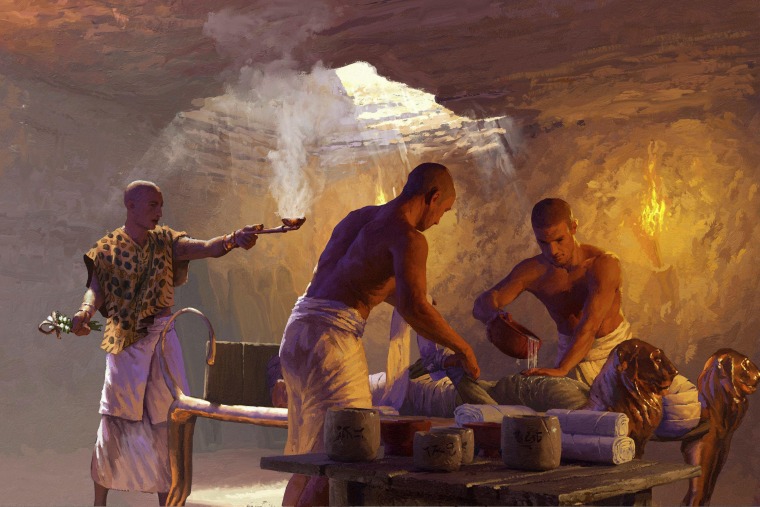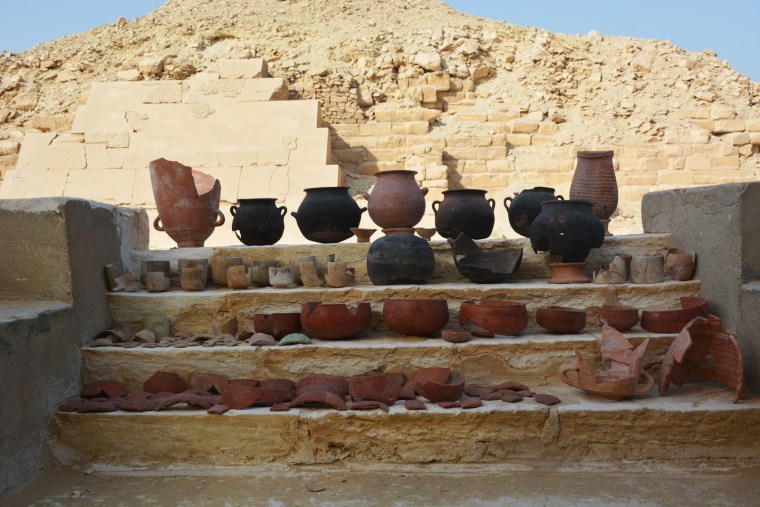The discovery of an unusual set of ceramic vessels has shed new light on the mummification process in ancient Egypt, according to a new study.
Around 2,500 years old, the 31 jars were discovered in an embalming workshop in the famed necropolis of Saqqara, near Cairo. The study was published Wednesday in the journal Nature.
Parts of the burial grounds sit above the surface, but a shaft stretches down to an embalming room and burial chamber underground, where the jars were discovered.

Chemical residue found in the jars allowed researchers to identify mixtures of fragrant or antiseptic oils, tars and resins, according to the study. This, matched with writing inscribed on the exterior of the containers, provided them with valuable new details about the mummification process, the researchers explained.
“The inscribed vessels can now be connected with specific materials and mixtures of materials that were unknown before,” Susanne Beck, one of the study’s authors, told NBC News via email Thursday.
She added that “very exotic products” like the Dammar tree resin and Elemi oil, “which are only native to rainforests in Asia and partially Africa,” had also been discovered in the jars.
Inscriptions on the jars, along with the chemical analysis of their contents, also helped researchers find Egyptian terms, like “Antiu” and “Sefet,” for specific mixtures, the researchers wrote in the study.

“This gives us an insight into the whole process of mummification and the logistics of it that we did not have until today,” said Salima Ikram, a professor of Egyptology American University in Cairo, who was not involved with the study.
“The fact that something that is a resin material or an oil from a plant is being traded is more interesting, because, you know, how did people know that they want this?” she said.
“Does it have properties that are unique, that other materials that could be found in the Mediterranean basin or the Horn of Africa does not possess?” she added.
Ikram also said she believed that the trade of embalmment material illustrates how knowledge was transferred among the equivalent of ancient medical practitioners or chemists.
